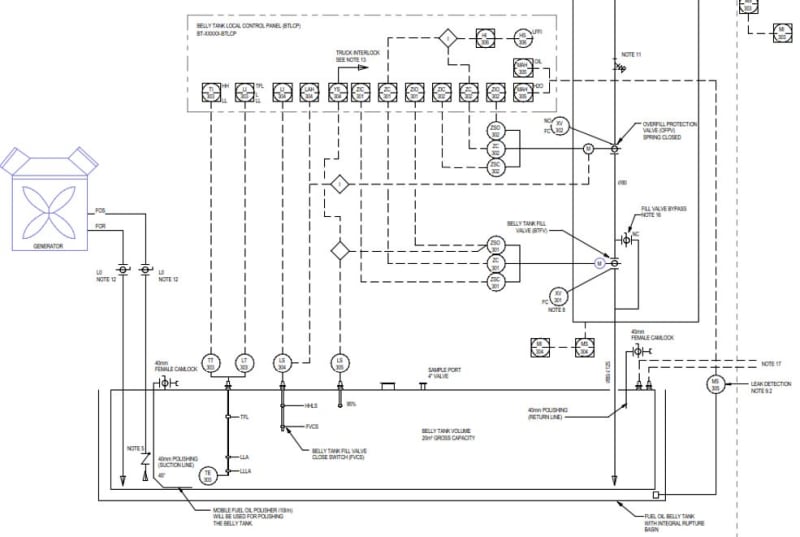Park View House
Chemical
Folks,
I am reviewing hazardous area classification for generator belly tanks for diesel (flash point 55C). Now I know diesel is not usually assigned hazardous area classification because it its high flash point. However, I think this might be an exception..
The fuel from the belly tanks is pumped to generator and unburnt fuel is returned to the belly tank. The unburnt fuel is at an elevated temperature (circa 90C) and can be as high as 50% of the fuel flow rate fed to the generator. From a hazardous area classification perspective, the worst case scenario is when the fuel level in belly tank runs low. The residual fuel temperature in the belly tank will be raised and could realistically come within 10C of the flash point of diesel. This is enough to consider the headspace in the belly tank Zone 2 (or Division 2 in USA).
Would anyone have an opinion about this?
I am based in Ireland and using degrees Celsius above.
regards
Richard
I am reviewing hazardous area classification for generator belly tanks for diesel (flash point 55C). Now I know diesel is not usually assigned hazardous area classification because it its high flash point. However, I think this might be an exception..
The fuel from the belly tanks is pumped to generator and unburnt fuel is returned to the belly tank. The unburnt fuel is at an elevated temperature (circa 90C) and can be as high as 50% of the fuel flow rate fed to the generator. From a hazardous area classification perspective, the worst case scenario is when the fuel level in belly tank runs low. The residual fuel temperature in the belly tank will be raised and could realistically come within 10C of the flash point of diesel. This is enough to consider the headspace in the belly tank Zone 2 (or Division 2 in USA).
Would anyone have an opinion about this?
I am based in Ireland and using degrees Celsius above.
regards
Richard

